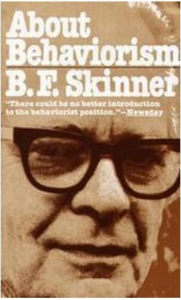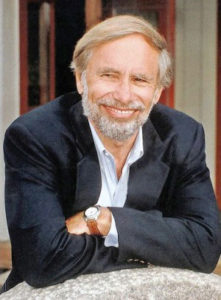The Science of Human Behavior
Applied Behavior Analysis is the science of human behavior. “Applied” means practice, rather than research or philosophy. “Behavior analysis” may be read as “learning theory,” that is, understanding what leads to (or doesn’t lead to) new skills. (This is a simplification: ABA is just as much about maintaining and using skills as about learning). It may seem odd to use the word “behavior” when talking about learning to talk, play, and live as a complex social animal, but to a behaviorist all these can be taught so long as there are intact brain functions to learn and practice the skills. That is the essence of the recovery hypothesis–for many children, the excesses and deficits of autism result largely from a learning ‘blockage,’ which can be overcome by intensive teaching.
Typically developing children learn without our intervention–the world around them provides the right conditions to learn language, play, and social skills. Children with learning and developmental disabilities such as autism learn much less easily from the environment. They have the potential to learn, but it takes a very structured environment, one in which conditions are optimized for acquiring the same skills that typical children learn “naturally.” ABA is all about how to set up the environment to enable kids to learn.
 Behavior analysis dates back at least to Dr. B.F. Skinner, who performed animal experiments showing that food rewards lead to behavior changes (learning). This is accepted by everyone who wants to train their dog to ‘go’ outside, though we are not so inclined to believe the same of ourselves. People, fortunately, respond to a broad range of reinforcements (rewards); an ABA teacher may use “edibles” at first, and then move on to a much wider range of rewards. The skills that we more often think lead to learning–motivation, self-discipline, curiosity–are marvelous and essential to our development–but those are truly sophisticated behaviors that bloom only after more basic language and social skills are in place.
Behavior analysis dates back at least to Dr. B.F. Skinner, who performed animal experiments showing that food rewards lead to behavior changes (learning). This is accepted by everyone who wants to train their dog to ‘go’ outside, though we are not so inclined to believe the same of ourselves. People, fortunately, respond to a broad range of reinforcements (rewards); an ABA teacher may use “edibles” at first, and then move on to a much wider range of rewards. The skills that we more often think lead to learning–motivation, self-discipline, curiosity–are marvelous and essential to our development–but those are truly sophisticated behaviors that bloom only after more basic language and social skills are in place.
Conversely, any new behavior that an animal (or person) may try, but is never rewarded, is likely to die out after a while (how many times will you drop money into that broken vending machine?). And, as common sense would have it, a behavior that results in something unpleasant (an aversive) is even less likely to be repeated. These are the basics of behavioral learning theory. ABA uses these principles to set up an environment in which our kids learn as much as they can as quickly as possible, with a constant emphasis on the use of positive rewards. It is a science, not a ‘philosophy.’ Even the “as quickly as possible” part is based on science, since there is some–not conclusive–evidence that the developmentally disordered brain “learns how to learn” best if the basic skills are taught in early childhood.
Behavioral learning is not the only type of learning. Most learning in schools is from an explanation or from a model (i.e., demonstration), what some people call natural learning. Typically developing children learn from their environment (other people) at an astounding rate, usually completely unassisted. The whole point of ABA is to teach the prerequisites to make it possible for a child to learn naturally. If our kids could learn without assistance in the first place they wouldn’t have autism!
Discrete trial training
 The most common and distinguishing type of intervention based on applied behavior analysis is discrete trial training. It is what people most often think of when you say “ABA” or “Lovaas method.” This is partly because there are so many hundreds of hours of DT teaching, and partly because it looks so odd compared with the way more typical children learn. But it works–every aspect has been refined (and is still being refined) to result in maximum learning efficiency.
The most common and distinguishing type of intervention based on applied behavior analysis is discrete trial training. It is what people most often think of when you say “ABA” or “Lovaas method.” This is partly because there are so many hundreds of hours of DT teaching, and partly because it looks so odd compared with the way more typical children learn. But it works–every aspect has been refined (and is still being refined) to result in maximum learning efficiency.
Briefly: the student is given a stimulus–a question, a set of blocks and a pattern, a request to go ask Mom for a glass of water–along with the correct response, or a strong ‘hint’ at what the response should be. He is rewarded (e.g., an M&M, a piggy-back ride, a happy “good job!”) for repeating the right answer; anything else is ignored or corrected very neutrally. As his response becomes more reliable, the ‘clues’ are withdrawn until he can respond independently. This is usually done one-on-one at a table (thus the term table-top work), with detailed planning of the requests, timing, wording, and the therapist’s reaction to the student’s responses.
It is a mistake, however, to think of an ABA program as just DT teaching. Dr. Ivar Lovaas (among others) notes very clearly that a behavioral program is a comprehensive intervention, carried out, as much as possible, in every setting, every available moment. The skills that are taught so efficiently in discrete trial drills must be practiced and generalized in natural settings. A child who does not know the difference between ‘ask’ and ‘tell’ may slowly get a higher and higher percentage of right answers during table-top drills until he is considered to have ‘mastered’ that skill; but he may not go on to use ‘ask’ and ‘tell’ appropriately without additional support in natural situations; it takes time to go from ‘mastery’ to ‘ownership.’ It takes trained and supportive people–parents, teachers, relatives, even peers–to help reinforce a wide range of appropriate behaviors in a variety of settings, until the level of reinforcement fades to a typical level, such as the smile you get when you greet someone.